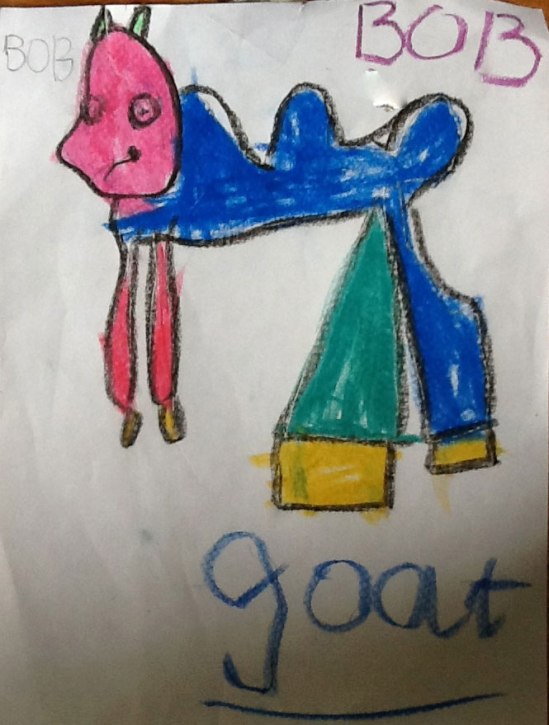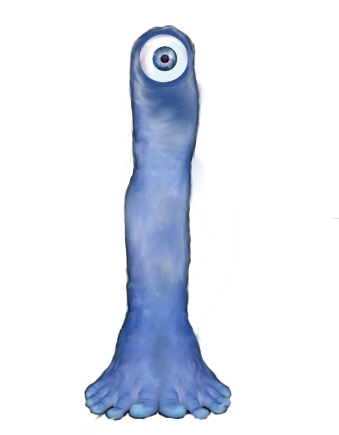My student Bob drew this picture of a goat and I have to say it is one of the best pieces of art any of my students have produced thus far. I just had to share it with you.
Monthly Archives: July 2012
Balancing Act
Florence
First Line
Duality of Trinities
Totem
Moonfield
The Top 10 Shapes
Hey everyone, Trent here. Today let’s learn about the ten best shapes in the history of the universe. There will be polygons and polyhedrons, and I may just throw you a curve ball or two. Be sure to leave a comment about what your favorite shape is!
Striated
Cherub
25 Favorite Video Games
For someone who doesn’t really consider himself a gamer, I have played a lot of video games. This is thanks to my brother, my mom, and various friends over the years. Every now and then a particular game will grab and hold my attention and I will play it for hours and days on end. Here is a list of those games that have gotten me addicted at one point or another. However, rather than rank specific games, I will instead rank game franchises. In parentheses I have written the game system I originally played it on (though most of them have appeared on multiple systems). Continue reading
ADDIE: Analysis and Design Phases
Have you ever heard of ADDIE? It’s an instructional design model. In other words, you can use this acronym to help you design any type of education, whether it be an elementary school class, a foreign language class, occupational training, or another type. It stands for Analyze, Design, Develop, Implement, Evaluate. As you can see from the diagram below, it is a cycle, repeating over and over as the course being designed is modified and refined.

ADDIE Instructional Design Model
Today let’s talk about the first two phases of the model, Analyze and Design.
First, before any designing can begin, we have to gather information about the specific situation we are designing for. This is the Analyze phase. We need data to work with, as we cannot begin designing with a blank slate. The information gives us a direction, and sets boundaries, for our course. What information do we look for? According to Hodell (2011), we must first determine whether there is a need for the training. If there’s no need, we shouldn’t do the training. Once a need is found, we must determine the root cause of the problem that necessitated the training. Next, we decide on the goals of training. These goals should be in line with the goals of the organization we are working for, but they need to be realistic. Another step is determining what further information needs to be gathered and how to go about getting it. We also need to make a note of how training will be structured, how it will be delivered, and when it should be revised.
One very important part of the Analyze phase is population analysis. This means gathering as much information as possible about prospective students. On the surface this means demographic data, such as age, gender, ethnicity, work experience, education, etc. This information can be used to determine the cultural environment of the classroom. When making the population profile, we also discover the students’ skill levels in various areas, which will help us set the difficulty level of the course as well as its prerequisites. Digging deeper, a population analysis should find out students’ attitudes, values, and opinions. Instructional designers can learn a lot about what should be included in their projects by listening to potential students’ insights.
After all this data is gathered, the stage is set for the Design phase to begin. Hodell argues that this phase is the heart of the entire ADDIE model, with the other phases depending on it. Design takes place after the Analyze phase but before the Develop and Implement stages. During this phase we detail every part of the project: rationale, target population, objectives, evaluation strategy, participant prerequisites, facilitator prerequisites, and more. We should be able to write a concise, general description of the project. We also produce other deliverables, such as rough drafts of course materials and handouts. We will take these documents into the next phase, Develop.
Studying the phases of the ADDIE model has given me some ideas for improving my own teaching. While I have yet to design a full course, I often do have to design individual lessons, based on textbook material. Therefore this is an opportunity to use the ADDIE model. However, because I teach at a language center, I usually have a different group of students in every class, rather than the same 20 students everyday. Therefore, it is often a surprise to see who shows up to a particular class. Needless to say, I don’t have the opportunity to practice the Analyze phase in these circumstances. One way my school could improve would be to provide teachers, through e-mail, with a list of students enrolled in each of my future classes, including detailed information about the skill levels of each. If I knew the past test scores and teacher comments of my students before I went in to teach, I would have a better idea about whether my lesson will be too easy or too difficult for them.
Are you interested in instructional design yourself now? The best way to learn Instructional Systems development is to take a class on it. If this isn’t possible, you can also utilize the vast resources of the Web to educate yourself. But you don’t have to do it alone. You can use the Internet to collaborate with experts and learners alike. For instance, you can register at Instructional Design Central’s forums to discuss the discipline with others.

Hodell, C. (2011). Isd from the ground up: A no-nonsense approach to instructional design (3rd ed.). United States of America: American Society for Training & Development.






















